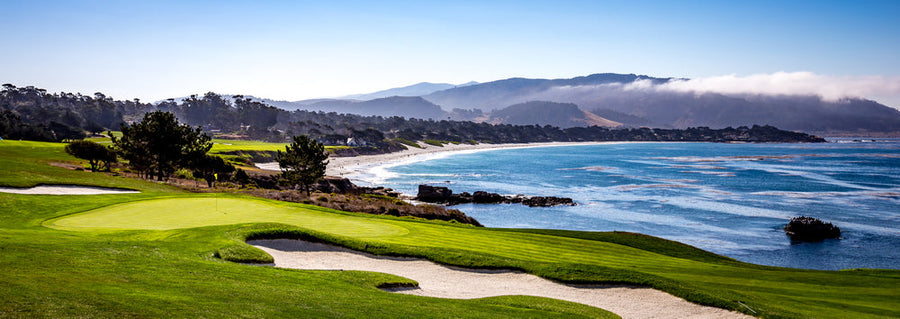The different types of golf courses and what you can expect
Posted by Joana Moselina on

There are many different types of courses encountered when playing golf, each with its own unique challenges and characteristics. Here are some examples:
-
Links Courses: Links courses are typically located along a coastline and are known for their sandy terrain and open, windy conditions. These courses are often linked to golf's origins in Scotland and Ireland and are characterized by their undulating surfaces, deep bunkers, and fast-running fairways.
-
Parkland Courses: Parkland courses are more traditional and tend to be found in park-like settings. They feature lush, manicured fairways, mature trees, and water hazards, and often require golfers to navigate through narrow corridors of trees.
-
Target Golf Courses: Target golf courses are designed to challenge a golfer's accuracy and precision. They often require players to hit precise shots to specific areas of the fairway, and the slightest mis-hit can result in a lost ball or a difficult second shot.
-
Desert Courses: Desert courses are found in areas with sparse vegetation and are characterized by their sandy, rocky terrain. These courses often feature elevated tees, deep canyons, and other natural formations that can present interesting and challenging shots.
-
Mountain Courses: Mountain courses are situated in hilly, mountainous regions and often feature elevated tee boxes and dramatic views. They require golfers to navigate uphill, downhill, and sidehill lies, along with varying wind conditions.
-
Executive Courses: Executive courses are shorter, non-standard 18-hole courses, typically designed for beginning, junior, or senior golfers. These courses are often intended to be challenging but less demanding, with shorter fairways and less complex terrain.
These are just some examples of the many different types of courses encountered when playing golf, and each offers a unique set of challenges that can test even the most skilled golfers.
Inside the Leather Golf delivers top-quality golf apparel and accessories right to your door. We save you time and take the hassle out of shopping, offering curated gear at unbeatable discounts that average 40-60% off retail prices—so you can look sharp and play sharper. Sign up today and take the guesswork out of golf shopping!